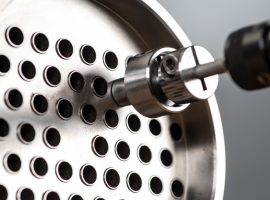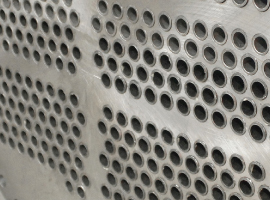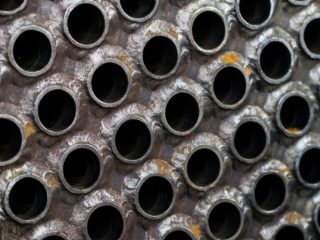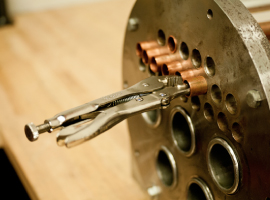Finished Tube ID & Torque Calculator
The below calculator can help you determine your finished ID target and recommended torque for expansion.
Calculator
NOTE: The calculated values are estimated based on the available inputs. Actual values may vary due to tube thickness, material, tube sheet thickness, lubrication, operation condition, and/or operator technique. Best practices are to start with a lower torque setting and measure each tube to ensure proper wall reduction and finished ID is achieved.
BWG / Wall Thickness (Inch) Conversion Chart
| Tube Wall BWG | Tube Wall Inches |
|---|---|
| 0 | 0.340 |
| 1 | 0.300 |
| 2 | 0.284 |
| 3 | 0.259 |
| 4 | 0.238 |
| 5 | 0.220 |
| 6 | 0.203 |
| 7 | 0.180 |
| 8 | 0.165 |
| 9 | 0.148 |
| 10 | 0.134 |
| 11 | 0.120 |
| 12 | 0.109 |
| 13 | 0.095 |
| 14 | 0.083 |
| 15 | 0.072 |
| 16 | 0.065 |
| 17 | 0.058 |
| 18 | 0.049 |
| 19 | 0.042 |
| 20 | 0.035 |
| 21 | 0.032 |
| 22 | 0.028 |
| 23 | 0.025 |
| 24 | 0.022 |
| 25 | 0.020 |
| 26 | 0.018 |
Industry Recommended Wall Reductions
| Material | TEMA Standard Target % Wall Reduction | API-660 Target % Wall Reduction |
|---|---|---|
| Aluminum 3003 or 4004 | 4 – 6% | 5 – 7% |
| Aluminum 6061-T | 6 – 9% | 8 – 10% |
| Carbon Steel & low-alloy steel (max 9% Chromium) | 5 – 8% | 8% max* |
| Stainless Steel and high-alloy steel | 5 – 8% | 6% max* |
| Duplex Stainless Steels | 4 – 6% | Not Specified** |
| Titanium (and other nonferrous, work hardening materials) | 4 – 6% | 5% max* |
| Admiralty Brass (and other nonferrous, non-work hardening materials) | 4 – 9% | 8%* |
| Copper & Copper Alloys | 7 – 10% | Not Specified |




